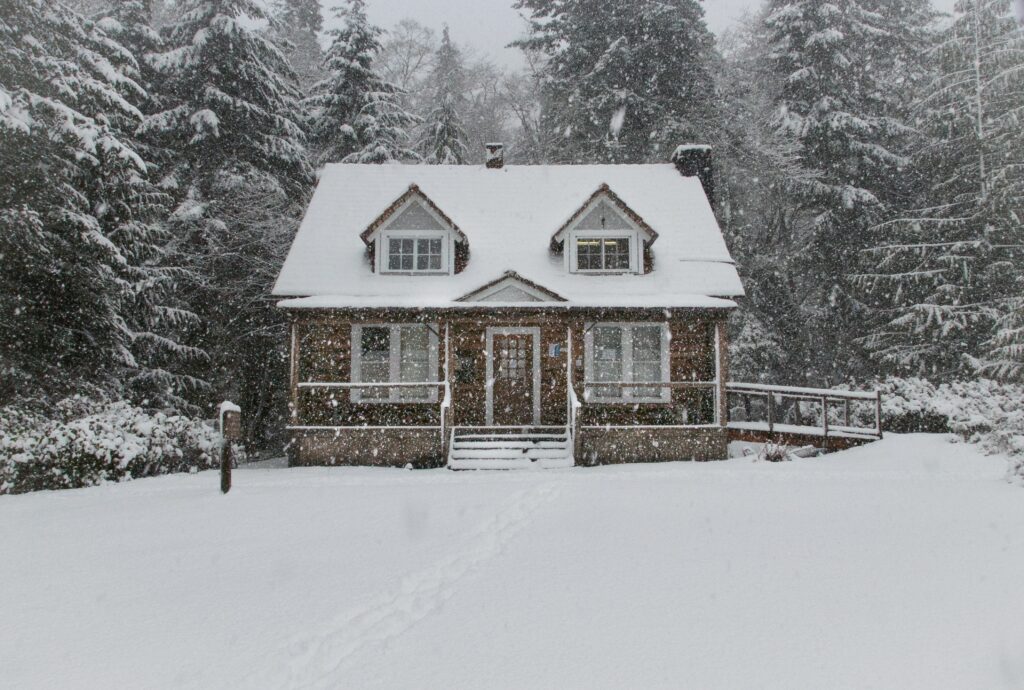In South Dakota, you never really know when to start winterizing your home. One year, the snow holds off until November, and other years we get blizzards in October! When it’s time to prep your home for winter weather, we have you covered.
INSIDE YOUR HOME
- Double-check any weatherstripping around doorframes and windows to prevent heat loss. You may have to replace some or consider a plastic wrap/insulation film for the windows.
- Check your furnace filter and replace if needed.
- Turn the ceiling fans clockwise; this way they’ll push all the hot air along the ceiling toward the floor. Usually there is a switch at the base of the fan to change this.
- Program your furnace. The US Department of Energy says you can save 1% on your energy bill for every degree you lower your home’s temperature during the winter. That’s the benefit of layers and blankets! Keep your home around 65 at night and add blankets to your beds. Set the thermostat around 68 during the day and be sure to wear warm sweaters and slippers. Also, you can keep your furnace on a schedule so that you don’t have to worry about wasting energy while no one is home during the day!
- Double check your fireplace; you never know what creatures or critters nested in your chimney during the warm months, so before you fire it up for the cold season, it’s a good idea to check it out! Examine the flue to make sure that the seal is tight, keeping out any extra cold and drafts.
OUTSIDE YOUR HOME
- Check your roof, gutters and drains and clean them of debris and leaves to prevent flooding when the snow melts.
- Disconnect any hoses from outside faucets and shut off the water to prevent damage from freezing. Cover faucets with foam covers for extra pipe protection and to reduce drafts inside your house.
- Cold temperatures can be damaging to some of your outdoor furniture and grills, so store them in an attic, basement, or garage if possible. If you don’t have the space to store them indoors, check out covers you can purchase instead.
- Buy a shovel or two before the big storms hit and keep some salt in storage for when ice sets in. Look for pet-friendly ice melt if you have furry friends to protect their paws and prevent toxicity if they eat it—ethylene glycol specifically is linked to dog and cat deaths every winter.
- Check handrails on stairs and decks to make sure they’re secure, preventing any accident or injury when things get icy.
- Prepare your snowblower by changing the oil and replacing the spark plug if necessary.
- Organize and rearrange the garage or storage sheds—you won’t need your weed whacker or lawn mower right now, so put those in the back and be sure to bring any winter supplies forward for easier access.
- If you have outdoor potted plants, you will want to bring them indoors or empty them. Leftover dirt can freeze and crack your pots!
CAR EMERGENCY KIT
While a car emergency kit isn’t quite home preparation, it is important to put one together for the winter months. You hope to never find yourself in a situation where you need it, but it is best to be prepared! If you are stuck on the interstate or out in the hills due to bad weather, or worst-case get into an accident, you will want to remember these things.
- Try to keep at least a half tank of gas in your car so you can keep your car running with the heat on.
- If you have your kiddos with you, it is a great idea to have snacks and water. It can be tricky to know when you will be back on the road again, so having snacks can help if your kids start to get hungry.
- Blankets and hats and gloves are a must in the winter. If your children don’t want to wear them to the car, at least make sure they have them before taking off from home. Here are some tips for keeping your babies warm, and older kids as well.
- Pack a flashlight, just in case you get stuck at night. Flashlights can help keep the kids calm in the dark.
- Shovels or salt/sand/kitty litter can be great if you just need to get out of a rut. Begin by creating a tire trail with a shovel and use kitty litter to give your tires a little traction to grip while starting up again.
- Always have a backup cellphone charger. This includes a charging cable, and maybe a battery pack that’s fully charged in case your phone dies and you need to call for help.
- Remember that unless you know exactly where you’re going and are confident you can make it, always stay with your car if you get stranded. Putting on your hazard lights lets people know you need help, and staying put makes you easy to find and reduces exposure to the elements!
Winter weather in the Black Hills can change in an instant, but by being prepared we can sit back and enjoy the snow rather than worry about it. We hope these tips help you and your family stay safe and warm!
Looking for winter family fun in the hills? Check out our ideas here.

